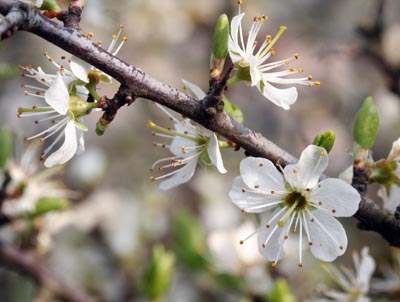I live in an area of highly acid soil, so I'm always keen to visit limestone areas. Soil type largely governs which plants can be found in a particular area, and different plants support different insects, so I always expect to find something new or different on these trips. Lough Erne is also much closer to sea level, so it's probably 7-10 days earlier than my local area.
My local violet is the Common Dog Violet - Viola riviniana, but this area has both riviniana and Viola reichenbachiana. The most obvious differences are the narrower flower and more pointed leaves:
 |
| Viola reichenbachiana |
And the dark, straight spur behind the flower:
 |
| Viola reichenbachiana spur |
Both violets were growing on a verge accompanied by Ground Ivy:
 |
| Ground Ivy |
Bluebells were just starting to open:
And this Dock Leaf Beetle -
Gastrophysa viridula - was either touring or lost: they are rarely seen far from Dock leaves.
I spotted my first Ichneumonid of the year. The size suggests that these will be looking for either large flies or small moths:
This flower is
Cardamine pratensis, which is the main foodplant of the Orange Tip butterfly, but is also used by the Green-veined White:
The minute moth is
Micropteryx calthella, which is associated almost exclusively with Buttercups in my area, but it clearly uses other nectar sources when they are available. I don't expect to see
Micropteryx calthella for perhaps another 3 weeks on my patch (the buttercups aren't even in bud yet).
I was delighted to find a new hoverfly species on the same verge. This is
Epistrophe eligans, one of the earlier species to emerge:
 |
| Male Epistrophe eligans |
Another plant that I only ever see on limestone is the Cuckoo Pint, a most wonderful member of the Arum family:
 |
| Cuckoo Pint |
No matter where I find Holly, I always find its leaf miner,
Phytomyza ilicis. I was always curious that only one species of miner lives in Holly leaves because it seems such a safe place for an insect to live. It turns out that Holly heals very quickly when damaged, and the plant considers the mine to be a wound.
Phytomyza ilicis is the only miner that moves quickly enough to keep ahead of the healing process:
 |
| Phytomyza ilicis on Holly |
Moth flies are a mysterious group of flies that run around on plant leaves like little planes trying to take off. The larvae live in cesspits, drains and compost heaps:
 |
| Moth Fly |
Lough Erne is a large expanse of water, so I usually expect to find some water-based species.
Alder Fly larvae are aquatic, and I only ever find the adults near rivers, ponds or lakes. The Alder Fly
Sialis lutaria has to be one of the least aptly named of all species. It isn't a fly (it has 4 wings and is related to lacewings) and it has no association with Alder:
 |
| Alder Fly Sialis lutaria |
Talking of aquatic species, I spotted this Coot sitting on her nest:
 |
| Coot |
A couple of fungi to finish.
Last year I found a rather rare fungal infection -
Taphrina crataegi - on Hawthorn. The leaves are only just open, and this bush was already infected:
|
| Taphrina crataegi on Hawthorn |
This appears to be the first record for Northern Ireland.
April 23rd is St. George's day, and St. George's mushroom -
Tricholoma gambosum - is traditionally found around this date:
 |
| St. George's mushroom - Tricholoma gambosum |
The spores are minute, around 5 x 3 microns:


















































